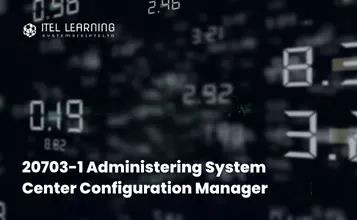Course Fee (with 9% GST)
Full Course Fees: $2,725
Self-Sponsored
SG Citizen/PR aged ≥ 21 years: $1,475
SG Citizen aged ≥ 40 years: $975
Co-Sponsored (SME)
SG Citizen/PR aged ≥ 21 years: $975
SG Citizen aged ≥ 40 years: $975
Co-Sponsored (MNC)
SG Citizen/PR aged ≥ 21 years: $1,475
SG Citizen aged ≥ 40 years: $975
Overview
Course Reference Number: TGS-2022016933
This 5-day course provides an excellent introduction to the security field and is typically a better entry point than jumping right into an advanced security program. With Security+, participants will build a solid foundation of knowledge that they can build upon – helping them to advance their career in the months and years to come.
Prerequisites
- Age: Minimum 18 years old
- Minimum: GCE ‘O’ Levels
- Language: Workplace Literacy and Numeracy Level 5 (WPLN: Speaking, Writing, Listening, Reading, and Numeracy at ESS Level 5 or equivalent to Upper Secondary Level of English and Mathematics).
- Basic Microsoft Windows and Linux Administrator
- Implement fundamental networking appliances and IP addressing concepts
IMportant notes
- Must attend at least 75% of the course before being eligible to take the assessments.
- Dynamic QR Code Attendance Taking:
a. Scan the QR Code that will be displayed by the Trainer on each session. Use your SingPass App to scan and submit your attendance. If you fail to do so, you will be deemed absent from that session.
b. The QR Code is only accessible on:
• Morning Session: between 9.00 am to 1.00 pm.
• Afternoon Session: between 2.00 pm to 6.00 pm.
c. Please take the attendance one at a time as the system can only register you one by one. - Sign daily on the Attendance Sheet as a backup if any technical glitch happens.
- Submit Course Evaluation by the end of each module to help us improve the course and your future learning experience with us.
- Attended at least 75% of the course.
- Declared as competent during the assessments.
who should attend?
This course is for those who want to pursue a career as Tier II IT Support Technician, IT Support Manager, Business Analyst, Cybersecurity Manager, Software Developer, and Systems Administrator.
Course Outline
- Compare and Contrast Information Security Roles
- Compare and Contrast Security Control and Framework Types
- Explain Threat Actor Types and Attack Vectors
- Explain Threat Intelligence Sources
- Assess Organizational Security with Network Reconnaissance Tools
- Explain Security Concerns with General Vulnerability Types
- Summarize Vulnerability Scanning Techniques
- Explain Penetration Testing Concepts
- Compare and Contrast Social Engineering Techniques
- Analyze Indicators of Malware-Based Attacks
- Compare and Contrast Cryptographic Ciphers
- Summarize Cryptographic Modes of Operation
- Summarize Cryptographic Use Cases and Weaknesses
- Summarize Other Cryptographic Technologies
- Implement Certificates and Certificate Authorities
- Implement PKI Management
- Summarize Authentication Design Concepts
- Implement Knowledge-Based Authentication
- Implement Authentication Technologies
- Summarize Biometrics Authentication Concepts
- Implement Identity and Account Types
- Implement Account Policies
- Implement Authorization Solutions
- Explain the Importance of Personnel Policies
- Implement Secure Network Designs
- Implement Secure Switching and Routing
- Implement Secure Wireless Infrastructure
- Implement Load Balancers
- Implement Firewalls and Proxy Servers
- Implement Network Security Monitoring
- Summarize the Use of SIEM
- Implement Secure Network Operations Protocols
- Implement Secure Application Protocols
- Implement Secure Remote Access Protocol
- Implement Secure Firmware
- Implement Endpoint Security
- Explain Embedded System Security Implications
- Implement Mobile Device Management
- Implement Secure Mobile Device Connections
- Analyze Indicators of Application Attacks
- Analyze Indicators of Web Application Attacks
- Summarize Secure Coding Practices
- Implement Secure Script Environments
- Summarize Deployment and Automation Concepts
- Summarize Secure Cloud and Virtualization Services
- Apply Cloud Security Solutions
- Summarize Infrastructure as Code Concepts
- Explain Data Privacy and Data Sensitivity Concepts
- Explain Privacy and Data Protection Controls
- Summarize Incident Response Procedures
- Utilize Appropriate Data Sources for Incident Response
- Apply Mitigation Controls
- Explain Key Aspects of Digital Forensics Documentation
- Explain Key Aspects of Digital Forensics Evidence Acquisition
- Explain Risk Management Processes and Concepts
- Explain Business Impact Analysis Concepts
- Implement Redundancy Strategies
- Implement Backup Strategies
- Implement Cybersecurity Resiliency Strategies
- Explain the Importance of Physical Site Security Controls
- Explain the Importance of Physical Host Security Controls








